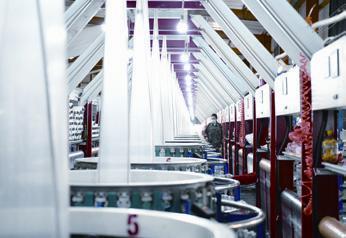China’s Economy on Path to Recovery,But Challenges Still Persist

Chinas economic activities continued to normalize as the latest data on industrial output, retail sales and investment showed across-the-board improvements. But the recovery still faces uncertainties and challenges from the global spread of the novel coronavirus.
The industrial sector was among the quickest to rebound from the impact of the virus, with the value-added industrial output returning to growth in April, the fi rst expansion since the virus outbreak as factory activities recovered amid easing containment measures.
The value-added industrial output went up 3.9 percent year on year in April, rebounding from the 1.1-percent drop in March and 13.5-percent slump seen in the fi rst two months of the year, according to data from the National Bureau of Statistics(NBS) on May 15.
Adding to the recovery signs, the index measuring services production fell 4.5 percent in April, narrowing from 9.1 percent in March, while retail sales of consumer goods went down 7.5 percent, recovering from a drop of 15.8 percent a month earlier.
Fixed assets investment declined 10.3 percent in the first four months, with the fall narrowing by 5.8 percentage points compared with the decrease in the first three months.
With consolidated epidemic control efforts and the restoration of economic activities, major indices have sustained the improving momentum since March, the NBS said in a statement.
“But it is still challenging for the economy to wipe out the severe shocks induced by the epidemic,” NBS spokesperson Liu Aihua said at a news briefi ng in response to a query about when the Chinese economy could return to growth.
The economy shrank by 6.8 percent year on year in the fi rst quarter as the virus outbreak dealt a huge blow to economic activity. While the epidemic has been basically brought under control at home, the global spread of the virus and collapsing external demand will complicate the future recovery of the worlds second-largest economy.
Despite the uncertainties, Liu stressed confidence in the economy as the fundamentals and the trend of upward momentum in the long term have not changed, citing the countrys economic scale, strong resilience, emerging new drivers and flexible macro policies as the major factors underpinning growth.
As the virus has continued to spread overseas, China will adjust its response policies to push the full normalization of its economy, Liu said.
Facing the economic shocks from the epidemic, China has increased policy support for the monetary and fi scal fronts to restart the economy and help businesses, especially small ones, to tide over diffi culties.
Commenting on the data, Wen Bin, chief analyst at China Minsheng Bank, said the bottleneck in Chinas economic recovery has shifted from business and production resumption along the industry chain to yet-to-fully-recover demand.
Stronger macro policies should be issued to spur the rebound in demand, including implementing further cuts to reserve requirement ratios and increasing the scale of local government bonds, Wen said.
In a research note ahead of the National Peoples Congress annual session scheduled to open on May 22, China International Capital Corporation Limited(CICC), an investment bank, said it expects more fl exible targets for economic growth and stronger counter-cyclical macroeconomic policy.
The CICC predicts that the defi cit ratio will rise by 3 to 4 percentage points and stabilizing employment will likely be the top priority of government work in 2020.
The data released on May 15 showed the job market remained generally stable in April, with the surveyed unemployment rate in urban areas standing at 6 percent, 0.1 percentage point higher than in March.

